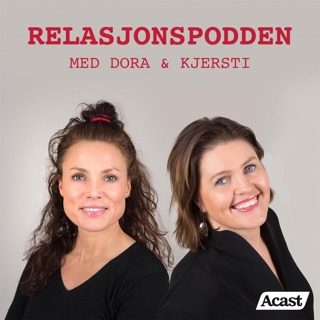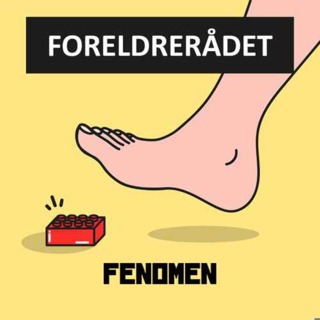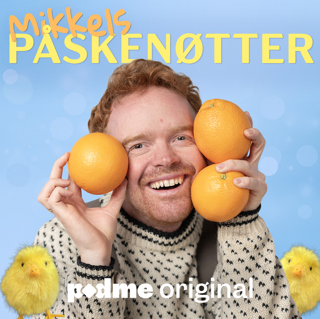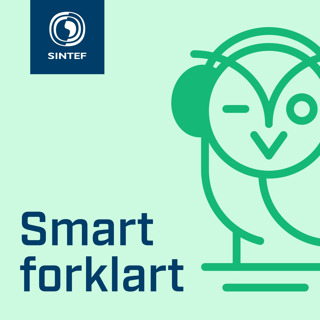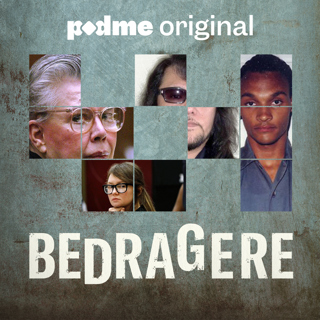
Episode 45 Preview
Subscribe on Apple Podcasts Subscribe on Google Play Subscribe on Stitcher Subscribe on YouTube Next week we'll be talking with special guest Devon Sundberg, coordinator of the Women in Behavior Analysis conference on the topic of--wait for it--women in behavior analysis. But first, some listener love for the Lake House and feedback on our feeding episode. Alliteration ahoy! Articles for next week: Ruiz, M.R. (2003). Inconspicuous sources of behavioral control: The case of gendered practices. The Behavior Analyst Today, 4, 12-16. doi: 10.1037/h0100005 LeBlanc, L.A. (2015). My mentors and their influences on my career. The Behavior Analyst, 38, 237-245. doi: 10/1007/s40614-015-0035-4 Simon, J.L., Morris, E.K., & Smith, N.G. (2007). Trends in women's participation at the meetings of the association for behavior analysis: 1975-2005. The Behavior Analyst, 30, 181-196.
6 Des 201711min

Episode 44 - Feeding
Subscribe on Apple Podcasts Subscribe on Google Play Subscribe on Stitcher While responding to challenges related to feeding isn't easy, aren't there set treatments that can be implemented to overcome any problem? Well....yes and no. While you ponder that mystery, enjoy this discussion of recent research related to a few of the common food refusal treatments including escape extinction, stimulus fading, and DRA. Be sure to listen all the way to the end for the terrifying twist ending!! Articles discussed this episode: Patel, M.R., Piazza, C.C., Martinez, C.J., Volkert, V.M., & Santana, C.M. (2002). An evaluation of two differential reinforcement procedures with escape extinction to treat food refusal. Journal of Applied Behavior Analysis, 35, 363-374. doi: 10.1901/jaba.2002.35-363 Mueller, M.M., Piazza, C.C., Patel, M.R., Kelley, M.E., & Pruett, A. (2004). Increasing variety of foods consumed by blending nonpreferred foods into preferred foods. Journal of Applied Behavior Analysis, 37, 159-170. doi: 10.1901/jaba.2004/37-159 Valdimarsdottir, H., Hallodorsdottir, L.Y., & Sigurdardardottir, Z.G. (2010). Increasing the variety of foods consumed by a picky eater: Generalization of effects across caregivers and settings. Journal of Applied Behavior Analysis, 43, 101-105. doi: 10.1901/jaba.2010.43-101 If you're interested in ordering CEs for listening to this episode, click here to go to the store page. You'll need to enter your name, BCBA #, and the two episode secret code words to complete the purchase. Email us at abainsidetrack@gmail.com for further assistance.
29 Nov 20171h 15min

Episode 44 Preview
Subscribe on Apple Podcasts Subscribe on Google Play Subscribe on Stitcher Subscribe on YouTube We can't think of anyone who works with individuals with autism who hasn't been faced with food refusal. Next week, we'll be reviewing articles related to responding to feeding issues including using escape extinction and stimulus fading. But, in the meantime, enjoy this preview episode where we become the only ABA podcast willing to play the Crossfire 80's TV show jingle. We're just that brave. Articles for next week: Patel, M.R., Piazza, C.C., Martinez, C.J., Volkert, V.M., & Santana, C.M. (2002). An evaluation of two differential reinforcement procedures with escape extinction to treat food refusal. Journal of Applied Behavior Analysis, 35, 363-374. doi: 10.1901/jaba.2002.35-363 Mueller, M.M., Piazza, C.C., Patel, M.R., Kelley, M.E., & Pruett, A. (2004). Increasing variety of foods consumed by blending nonpreferred foods into preferred foods. Journal of Applied Behavior Analysis, 37, 159-170. doi: 10.1901/jaba.2004/37-159 Valdimarsdottir, H., Hallodorsdottir, L.Y., & Sigurdardardottir, Z.G. (2010). Increasing the variety of foods consumed by a picky eater: Generalization of effects across caregivers and settings. Journal of Applied Behavior Analysis, 43, 101-105. doi: 10.1901/jaba.2010.43-101
22 Nov 201719min

Episode 43 - Anxiety
Subscribe on Apple Podcasts Subscribe on Google Play Subscribe on Stitcher Is anxiety just some imprecise term developed by our verbal community? Or does anxiety refer to a specific series of private events that can affect human behavior? Well, we've spent over an hour discussing the who's, what's, and where's of anxiety in the hopes of coming to some sort of a conclusion. I don't know if we do, but at least Rob wrote a new song for the occasion! Articles discussed this episode: Friman, Patrick C., Hayes, S.C., & Wilson, K.G. (1998). Why behavior analysts should study emotion: The example of anxiety. Journal of Applied Behavior Analysis, 31, 137-156. doi: 10.1901/jaba.1998.31-137 Flood, W.A. & Wilder, D.A. (2004). The use of differential reinforcement and fading to increase time away from a caregiver in a child with separation anxiety disorder. Education and Treatment of Children, 27, 1-8. Hagopian, L.P. & Jennett, H.K. (2008). Behavioral assessment and treatment of anxiety in individuals with intellectual disabilities and autism. Journal of Developmental and Physical Disabilities, 20, 467-483. doi: 10/1007/s10882-008-9114-8 If you're interested in ordering CEs for listening to this episode, click here to go to the store page. You'll need to enter your name, BCBA #, and the two episode secret code words to complete the purchase. Email us at abainsidetrack@gmail.com for further assistance.
15 Nov 20171h 11min

Episode 43 Preview
Subscribe on Apple Podcasts Subscribe on Google Play Subscribe on Stitcher Subscribe on YouTube We're a little nervous to say it, but next week, we're going to talk about anxiety from a behavior analytic standpoint and try to make sense of whether or not its treatment is a realm appropriate for BCBAs to tackle. Spoiler: of course it is! Meanwhile, listen to Rob drone on about how great he is at running. And let us know if you like the new camera set up! Articles for next week: Friman, Patrick C., Hayes, S.C., & Wilson, K.G. (1998). Why behavior analysts should study emotion: The example of anxiety. Journal of Applied Behavior Analysis, 31, 137-156. doi: 10.1901/jaba.1998.31-137 Flood, W.A. & Wilder, D.A. (2004). The use of differential reinforcement and fading to increase time away from a caregiver in a child with separation anxiety disorder. Education and Treatment of Children, 27, 1-8. Hagopian, L.P. & Jennett, H.K. (2008). Behavioral assessment and treatment of anxiety in individuals with intellectual disabilities and autism. Journal of Developmental and Physical Disabilities, 20, 467-483. doi: 10/1007/s10882-008-9114-8
8 Nov 201721min

Episode 42 - CMOs
Subscribe on Apple Podcasts Subscribe on Google Play Subscribe on Stitcher On this week's episode we discuss CMO-R's, CMO-T's, and everything in between. Is it possible to improve discrete trial training with a better understanding of why kids hate DTT? And how can we shift student motivation to improve discrimination in PECS training? Then, between all of Diana and Jackie's smart talkin', Rob gets the ultimate revenge on those who have wronged him! Don't forget to download this; our absence serves as a CMO-P (for podcast). Articles discussed this episode: Carbone, V.J., Morgenstern, B., Zecchin-Tirri, G., & Kolberg, L. (2010). The role of the reflexive-conditioned motivating operation (CMO-R) during discrete trial instruction of children with autism. Focus on Autism and Other Developmental Disabilities, 25, 110-124. doi: 10.1177/1088357610364393 Gutierrez, A. Jr., Vollmer, T.R., Dozier, C.L., Borrero, J.C., Rapp, J.T., Bourret, J.C., & Gadaire, D. (2007). Manipulating establishing operations to verify and establish stimulus control during mand training. Journal of Applied Behavior Analysis, 40, 645-658. doi: 10.1901/jaba.2007.645-658 If you're interested in ordering CEs for listening to this episode, click here to go to the store page. You'll need to enter your name, BCBA #, and the two episode secret code words to complete the purchase. Email us at abainsidetrack@gmail.com for further assistance.
1 Nov 20171h 6min

Episode 42 Preview
Subscribe on Apple Podcasts Subscribe on Google Play Subscribe on Stitcher Subscribe on YouTube Next week is all about CMOs, one of the first topics we were ever asked to do by a listener. And it only took us until episode 42 to get there. So, while you wait for the new episode, let's discuss everyone's fall preferences. Or perhaps its Diana's Christmas list, it's hard to tell... Articles for next week: Carbone, V.J., Morgenstern, B., Zecchin-Tirri, G., & Kolberg, L. (2010). The role of the reflexive-conditioned motivating operation (CMO-R) during discrete trial instruction of children with autism. Focus on Autism and Other Developmental Disabilities, 25, 110-124. doi: 10.1177/1088357610364393 Gutierrez, A. Jr., Vollmer, T.R., Dozier, C.L., Borrero, J.C., Rapp, J.T., Bourret, J.C., & Gadaire, D. (2007). Manipulating establishing operations to verify and establish stimulus control during mand training. Journal of Applied Behavior Analysis, 40, 645-658. doi: 10.1901/jaba.2007.645-658
25 Okt 201715min

BABAT Special 2017
Subscribe on Apple Podcasts Subscribe on Google Play Subscribe on Stitcher The BABAT conference in Massachusetts is all done, but that doesn't mean the fun is over. Stay with us a while as we discuss our favorite talks, reflect on the highs of the conference, and bother a bunch of students until they agree to talk about their research on our show. Remember, we made this episode instead of getting a good night's sleep in our discount hotel beds. Posters discussed this episode: A Methodology for Testing Whether Tokens function as Reinforcers. Meacha Coon and Jason Bourret (The New England Center for Children). Teaching an Adult with Autism Spectrum Disorder to Use an Activity Schedule During Vocational Beekeeping. Jessica Sances, Jessica Day-Watkins, and James Connell (Drexel University). Evaluating Procedural Parameters of Successive Matching-to-Sample for the Establishment of Equivalence Classes. Tim Howland, Karina Zhelezoglo, Areli Perez Sotelo, and Caio Miguel (California State University, Sacramento). Teaching Symbolic Play to Young Children with Autism. Laura Wilhelm and Bill Ahearn (The New England Center for Children). Effects of Category and Choice on Preference. Jessica Gutfleish, Diannelys Rojas, and Allen Karsina (The New England Center for Children). Positive Parent Contact to Enhance Family-School Communication: Does This Improve Classroom Behavior? Sarah Fefer, Ashley Thoma, and Marina Donnelly (University of Massachusetts, Amherst).
18 Okt 201736min






